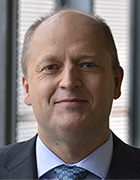IoT Agenda
Recent Posts
-

Protecting your IoT devices protects your business
- BSI 28 May 2021 -

Open source IoT tools to choose in 2021
- Hyperlink InfoSystem 17 May 2021 -

How IoT technology enhances smart water quality management solutions
- Biz4Intellia 13 May 2021
Organizations use IoT security standards and frameworks to secure IoT applications, data and devices, even for a fully remote workforce going forward. IoT security is more than a technology ...
Open source platforms can make developing IoT deployments easier, but organizations have multiple options to choose from, including these seven.
IoT makes it possible to monitor water quality remotely and automatically through sensors, which can be useful in healthcare facilities, water utilities and wastewater management.
-

IoT applications to improve senior care
- Semtech 26 Apr 2021 -

Democratizing machine learning will transform IoT
- Nordic Semiconductor 26 Apr 2021 -

New IoT Cybersecurity Improvement Law is a start, not a final solution
- Actian 16 Apr 2021 -

Video is now cloud-ready
- Arcules 15 Apr 2021 -

LPWAN systems offer an easy-to-use connectivity option
- Semtech 01 Apr 2021 -

AI and IoT convergence could herald a new era of technological change
- Avnet 29 Mar 2021 -

Use a zero trust approach to combat IoT security risks
- Fortinet 26 Mar 2021
The growth and reliability of long range, low power IoT technology will create a safer and improved way of life, particularly for seniors and patients.
For the smart home to succeed, what happens in the home, will have to stay in the home and become smarter without the infinite compute capability of the cloud and with features such as voice ...
Even though the new IoT Cybersecurity Improvement Law takes a step towards better connected device protections, organizations still have many cybersecurity challenges to tackle.
The ability to migrate video surveillance workloads to the cloud and further depopulate the datacenter will give IT value-added resellers an advantage with CIOs who want to invest heavily in their ...
The pandemic has made lasting changes to supply chains across industries, pushing organizations to better track goods and equipment with IoT sensors and LPWAN networks.
With the right planning, tools and expertise, organizations that combine AI and IoT into AIoT will deliver benefits that only AI can help predict.
Cyber attacks on IoT and CMS have grown throughout 2020 and organizations must step up their network security measures with tactics such as zero-trust.
-

How businesses can become more resilient and competitive in 2021
- Vodafone Americas 12 Mar 2021 -

Overcome IoT application challenges with in-memory computing
- GridGain Systems 08 Mar 2021 -

Returning to live events in smart arenas
- Semtech 01 Mar 2021 -

Why connected healthcare needs a product mindset
- Eggplant 12 Feb 2021 -

The rise of the enterprise consumer
- Amdocs 01 Feb 2021 -

Managing digital out-of-home advertising with IoT, edge and 5G
- Aikaan Labs 27 Jan 2021 -

Confronting the threat of edge-enabled swarm attacks
- Fortinet 22 Jan 2021 -

Gain an edge on IoT storage
- Lightbits Labs 21 Jan 2021 -

IoT becomes an on-ramp for edge computing
- Red Hat 15 Jan 2021 -

3 ways technology and IoT will reshape businesses in 2021
- Extreme Networks 06 Jan 2021 -

Reasons to believe -- or not believe -- in IoT
- OIES Consulting 05 Jan 2021 -

Integrating IoT technology for effective environmental monitoring
- Biz4Intellia 04 Jan 2021 -

Monetization metrics: understanding the units of value that matter to customers
- Flexera Software 18 Dec 2019 -

The emergence of autonomous irrigation technology streamlines farming operations
- Semtech 12 Nov 2019 -

Connected cars and the impact of digital transformation on the auto industry
- Jabil 30 May 2019 -

As Phoenix emerges from recession, smart city initiatives move front and center
- Cisco 10 May 2019 -

Why are connected devices leaving UK businesses as vulnerable as ever in 2019?
- ForeScout 07 May 2019 -

For IoT and facilities management, the destination matters as much as the journey
- ServiceChannel 30 Apr 2019 -

Combining IoT with the power of blockchain to get over the logistics hurdles
- Atlas City 03 Apr 2019 -

Connected cars: The roles of app developers and car manufacturers are changing
- High Mobility 13 Mar 2019 -

4 IoT monetization strategies -- and how to choose the right one for your offerings
- Flexera Software 07 Mar 2019 -

Overcome the cybersecurity skills gap to embrace the digital transformation power of IoT
- Fortinet 25 Feb 2019 -

Strong security can unleash the promise of the industrial internet of things
- DigiCert 20 Feb 2019 -

Avoid tech's valley of death: Advanced R&D lessons on scaling IoT proofs of concept
- Deloitte Consulting BV 28 Jan 2019 -

Does broad-based heart rate monitoring open up room for 'Mickey Mouse medicine?'
- VivaLNK 14 Jan 2019 -

Thanks to new wireless capabilities, the future of IoT rests only on our imaginations
- Twilio 10 Jan 2019 -

IoT and streaming data are revitalizing the brick-and-mortar shopping experience
- Cloudera 07 Jan 2019 -

Car lot operators benefit from IoT device that locates cars without a search party
- Silicon Labs 13 Dec 2018 -

Monetizing connected car data: Preparing for the next billion-dollar industry
- Actian 28 Nov 2018 -

5 questions to ask before piloting AI for advanced analytics in manufacturing
- ClearSky Data 14 Nov 2018 -

How can service providers shift into the center of the smart home experience?
- Calix, Inc. 02 Nov 2018 -

Rapid prototyping with embedded products helps hardware developers focus on innovation
- Texas Instruments 25 Sep 2018 -

Is your city as smart as a 10 year old? To get smart, cities must focus on friction
- Infor 21 Sep 2018 -

Blockchain offers a new approach to customer satisfaction with the help of IoT
- Voxpro - powered by TELUS International 13 Sep 2018 -

Professional services industry and IoT: The tech problems this industry faces
- Tangoe 06 Sep 2018 -

How to determine the right balance of cloud and edge for your analytics project
- Stratus Technologies 14 Aug 2018 -

IoT and the workplace: Transform spaces, improve satisfaction and productivity
- Honeywell Building Solutions 13 Aug 2018 -

Predictions on a silver platter: How AI Is creating more effective human interactions
- Sisense 07 Aug 2018 -

In-memory HTAP computing: Create smart IIoT applications with continuous learning
- GridGain Systems 13 Jul 2018 -

IoT inflection points you aren't thinking about and what they mean for developers
- Twilio 30 May 2018 -

How real-time location services will drive the future of IoT smart logistics
- Roambee 02 May 2018 -

Future of real-time enterprise IoT depends on in-memory computing powered HTAP
- GridGain Systems 01 May 2018 -

Ethics, values and common standards are essential for shaping an IoT-smart society
- Wipro 23 Apr 2018 -

How a blend of customer experience and data helps brands build trust in IIoT
- Voxpro - powered by TELUS International 18 Apr 2018 -

Behavioral eManipulation: Attacking the care delivery workflow to deliver harm
- Independent Security Evaluators 10 Apr 2018 -

Five ways adaptive diagnostics improves repair of mission-critical equipment
- Bsquare Corporation 09 Apr 2018 -

Four keys to successful IoT product software: Using a co-development approach
- Intelligent Product Solutions 08 Mar 2018 -

The new bottoms-up IIoT strategy that may already be underway at your organization
- Kepware Technologies 06 Mar 2018 -

Dawning of the digital security border: A new standard for wide area perimeter and border security
- Ondas Networks Inc. 08 Feb 2018 -

The role retailers should play in driving IoT security certification standards
- JASK 02 Feb 2018 -

Smart manufacturing and IoT: Driving operational efficiency with real-time insights
- Splunk 31 Jan 2018 -

Predictions: Learning from the past as we advance IoT security in 2018 and beyond
- ForeScout 30 Jan 2018 -

The data platform is key to connected cars and the internet of automotive things
- MapR 29 Jan 2018 -

IoT to grow out of awkward adolescence in 2018 and other trends for the new year
10 Jan 2018 -

Wired to wireless: The next big change in advanced metering infrastructure and connected societies
- Delta Energy & Communications 04 Jan 2018
Organizations must make themselves future ready and adapt their business plans to take advantage of the seamless access IoT technology provides to crucial business data.
With the adoption of IoT continuing to explode, developers should explore the potential of in-memory computing platforms to create a cost-effective, massively scalable foundation for their ...
With increased precautions and IoT technology in place, consumers can find comfort in returning to in-person events at arenas or stadiums with better safety precautions to reduce the spread of germs.
Healthcare providers must approach IoT deployments and digital transformations as products that must continually adapt and improve, not projects they can forget about once implemented.
As the office and home remain merged, enterprise consumers will become a significant area of focus for communication service providers and IoT developers alike.
Digital out-of-home advertising is here and IoT, edge computing and 5G technology advancement are able to offer the best platform to light up the imagination of creative minds.
Cybercriminals can use thousands of hijacked devices to create swarm attacks. These attacks target networks or edge devices, and share intelligence in real time to refine an attack as it takes place.
IoT storage on the edge is growing exponentially, so it's important companies prepare for and meet all its challenges.
IoT dovetails with edge computing in two primary ways: IoT is a workload using edge computing as its platform and other edge workloads are more squarely in IoT’s influence, such as chemical plants ...
As 2020 comes to a close and the COVID-19 pandemic persists in 2021, businesses must invest in IoT, networking, cloud and analytics tools to ensure safe re-entry into offices.
There are several reasons to believe or not believe in IoT, but businesses can no longer deny the possible opportunities these connected devices bring to the table.
IoT technology provides innovative ways to track and mitigate environmental challenges. Organizations can integrate smart concepts for safer surroundings and increased business growth.
Monetization metrics are a critical component to IoT product profitability, and product managers must understand how to use it in order to identify and price the units of value that are important ...
As advancements in technology continues, agricultural farmers can take advantage of LoRa and automatic identification services to better automate and streamline agricultural operations.
The future of connected cars is accompanied by a need for increased connectivity. Jabil's Trevor Neumann discusses the challenges and opportunities this will have for automakers.
After a decade, the city is growing. Following smart city pilots, Phoenix will develop a roadmap for smart city initiatives in 2020. Cisco's Lauren Horwitz sat down with Phoenix's CIO Matthew Arvay ...
Collective consciousness about IoT risks and the consequences of IoT security breaches is growing, but still many organizations remain susceptible to attack. Forescout's Myles Bray discusses the ...
The best facilities managers use automation and IoT to efficiently handle work orders. ServiceChannel's Hugues Meyrath explains why facilities managers need to stay on top of their IoT data to reap ...
From hefty delays to IT failures, risks are unabating for logistics firms. Atlas City's Chris Justice reveals how IoT and blockchain can help.
High Mobility's Kevin Valdek outlines the roles of connected car manufacturers and connected car app developers, and how these two often co-dependent groups are coming together to change the industry.
The internet of things is changing how products and services are delivered. Flexera's Cris Wendt discusses four popular monetization models and how each pertains to IoT.
Securing IoT is critical, but with a major security skills shortage, recruiting talent is challenging to say the least. Fortinet's Jonathan Nguyen-Duy offers insight into finding – or cultivating – ...
Industrial IoT is set to make a worldwide economic impact. However, without strong security, IIoT efforts are for naught. DigiCert's Dan Timpson explains why PKI and digital certificates are key to ...
To scale your IoT proof of concept, says Deloitte's Helena Lisachuk, learn from the successes of advanced R&D. Here, Lisachuck explains why promising proofs die -- and what to do about it.
Broad-based heart rate monitoring wearables are being met with praise and criticism. As VivaLNK's Jiang Li explains, a balance needs to be struck between making connected health devices accessible ...
By solving key developer issues and lowering barriers to entry, says Twilio's Evan Cummack, new wireless capabilities are helping industry leaders usher in a new era of IoT.
New technologies are enhancing in-store execution, operational efficiencies and improving customer experiences more than ever before. Cloudera's Brent Biddulph discusses the benefits of IoT and ...
In this case study, Silicon Labs' Alex Koepsel explains how startup Cognosos built an IoT platform to help car lot operators track vehicle inventories, saving them time and money.
To accurately monetize connected car data, says Actian's Lewis Carr, it's important to realize it's not about the car itself, but the people driving them -- and meeting their desires in real time.
To pilot a successful enterprise AI project, it is critical to consider what you are trying to solve, what improvements will be reached and more, suggests ClearSky Data's Laz Vekiarides.
While internet service providers have become an invisible brand in many households, the smart home movement presents an opportunity which Calix's Michael Weening says ISPs cannot ignore.
Texas Instrument's Adrian Fernandez explains what is happening in the industry that is enabling the rapid iteration and prototyping of embedded hardware products.
A smart city is more than just connected infrastructure. Infor's Guy Courtin discusses how using digital to reduce friction and inefficiencies will make truly smart cities a reality.
Pairing blockchain with IoT is revolutionizing the customer experience, says Voxpro's Brian Hannon, namely by providing the trust needed to build customer relationships on core values of security, ...
Most professional services organizations are stuck in the earliest stages of adopting IoT. MOBI's Josh Garrett explains why this industry is challenged by IoT.
Finding the right balance between edge and cloud is the key to success, says Stratus Technolgies' Jason Andersen. With right combination of edge and cloud, organizations can see real ROI and often ...
Adding IoT-enabled technologies into buildings not only transforms spaces and optimized efficiency, it also affects and organization's biggest asset: its people. Honeywell's Himanshu Khurana explains.
Artificial intelligence can help service providers anticipate what customers need and want before the customer even knows. Sisense's Guy Levy-Yurista examines how AI will offer high-value service.
Continuous learning systems are now attainable for a range of industrial IoT use cases thanks to in-memory HTAP computing. GridGain's Nikita Ivanov discusses.
As businesses move from IoT experimentation to real-world IoT applications, there are a number of inflection points emerging. Twilio's Chetan Chaudhary discusses what these mean for developers.
Real-time location services is poised to bring a 'new logistics order.' Roambee's Sanjay Sharma outlines the benefits for logistics companies and their clients alike.
IoT requires a critical technology infrastructure reinvention, which can be enabled only by HTAP powered by in-memory computing. GridGain Systems' Nikita Ivanov explains.
Industry leaders and policymakers must ensure the well-being of the consumer in a smart, connected world. Wipro's Jayraj Nair explains why ethics, values and common standards are critical.
A successful industrial IoT deployment requires the right mix of customer experience and data utilization. Voxpro's Brian Hannon offers advice to help customer experience teams prepare support for ...
Behavioral eManipulation, explains Independent Security Evaluators' Ted Harrington, is an attack methodology in which attackers use technical exploits to influence human behavior.
Bsquare's Dave McCarthy discusses five critical ways adaptive diagnostics is helping improve repair of mission-critical equipment.
Deploying successful IoT software is much like building a house; it requires coordination and prioritization. IPS's Danny Aponte offers four steps to creating successful IoT software.
A bottoms-up approach to industrial IoT is popping up at many plants, with IT pros and engineers launching IIoT initiatives in a DIY fashion. Kepware's Jeff Bates discusses.
Technology-based perimeter security may have a potential use case in the U.S. again thanks to low-power sensors and the new 802.16s industrial wireless standard.
IoT security is a major concern, especially for retailers. JASK's Greg Martin explores the role retailers have to play in securing IoT and keeping themselves and consumers safe.
Insights gleaned from IoT data are changing business models, and no other sector has been impacted by the IoT transformation more than manufacturing.
Myles Bray of ForeScout compiled IoT security predictions from Ayelet Kutner, Jon Connet and Bob Reny, revealing what security threats organizations may see over the next year.
The success of connected and autonomous cars requires a fundamental shift in the data platforms used to support them. MapR's Crystal Valentine discusses.
It will be 2018 in which IoT grows up and offers true innovation. Infiswift's Arup Barat discusses this and more IoT trends for the coming year.
802.11s will allow us to rethink how wireless networks are designed in individual homes and businesses and, eventually, communities and smart grids.